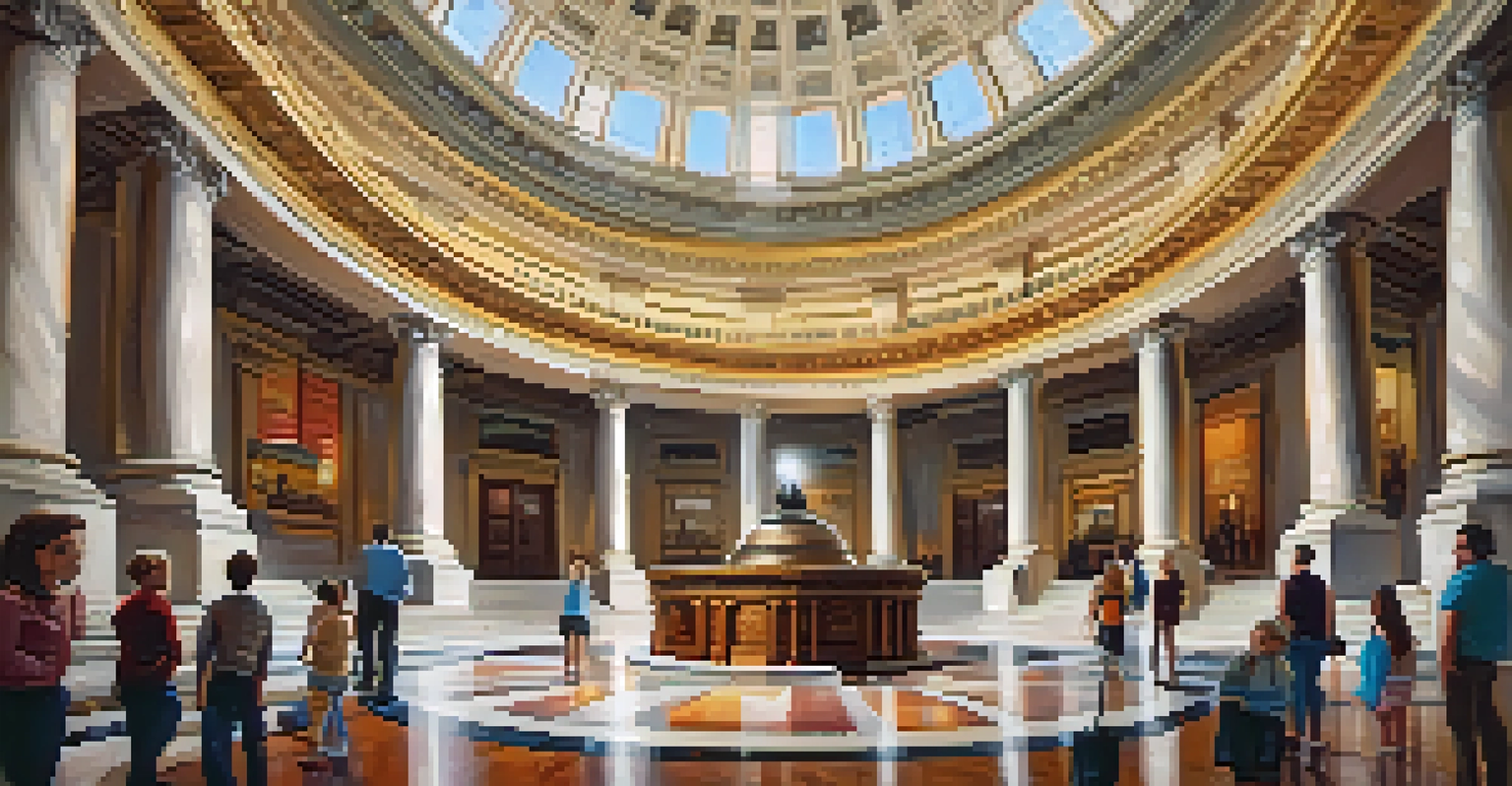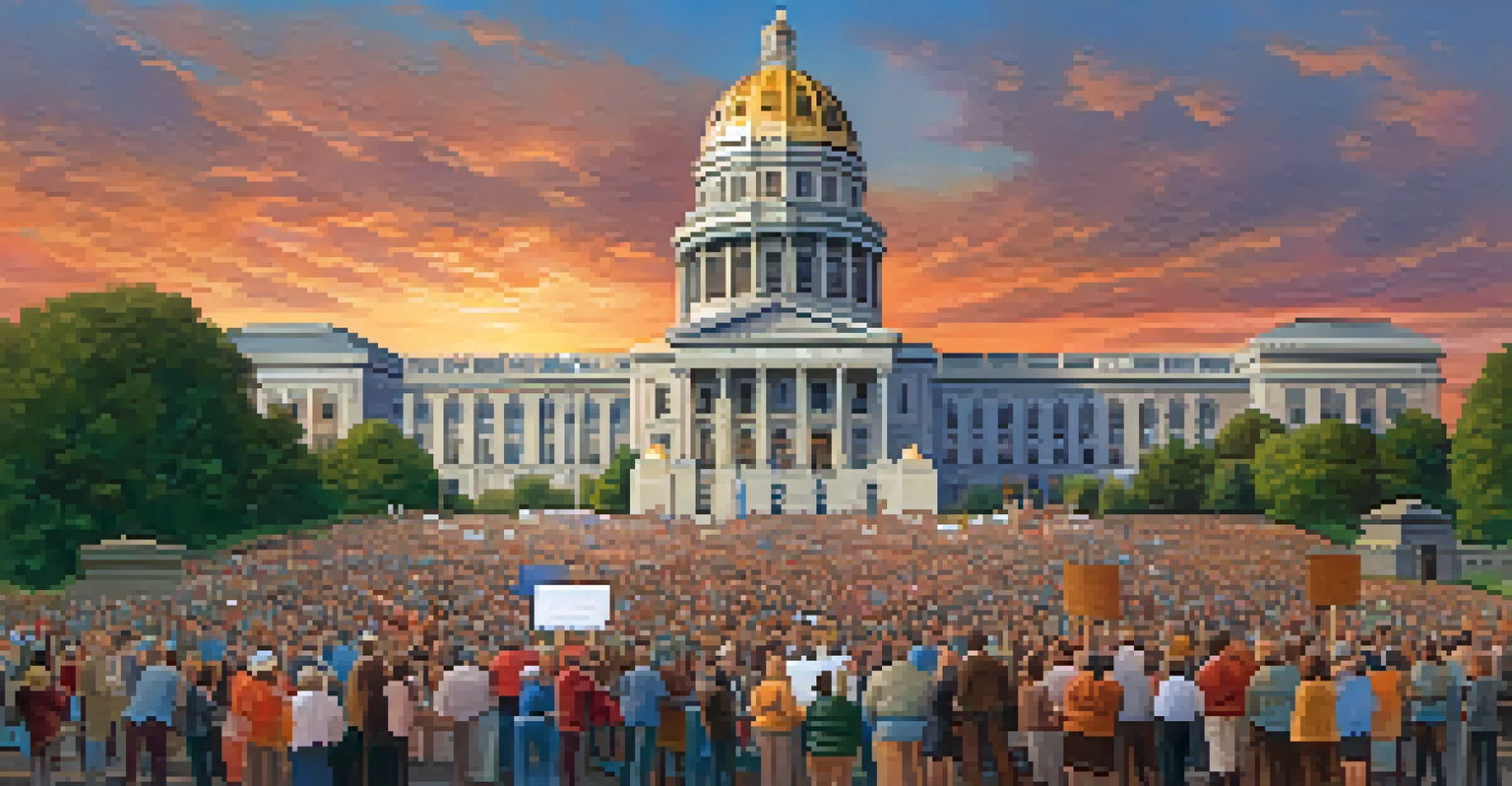The Missouri State Capitol: A Hub of Political Heritage

A Brief History of the Missouri State Capitol
The Missouri State Capitol, located in Jefferson City, has a rich history dating back to its completion in 1917. This impressive structure replaced two earlier capitols, reflecting the state's growth and resilience. The design, inspired by the U.S. Capitol, showcases beautiful neoclassical architecture that captures the essence of Missouri's political journey.
The only thing we have to fear is fear itself.
The Capitol’s construction was a significant undertaking, funded by a bond issue, and involved many skilled laborers and artisans. As the heart of Missouri's government, it has hosted countless legislative sessions, debates, and decisions that have shaped the state. Each corner of this building tells a story of the past, echoing the voices of those who have walked its halls.
Today, the Missouri State Capitol stands not just as a working government building but as a symbol of the state's democratic values and heritage. Its majestic dome and intricate murals speak to the ideals of governance and civic engagement. It invites visitors to delve into the history that has forged Missouri’s identity.
Architectural Highlights of the Capitol
The architectural beauty of the Missouri State Capitol is nothing short of breathtaking. The grand entrance is marked by a wide staircase leading up to impressive columns, setting the tone for what lies within. Visitors are often struck by the stunning dome, which rises 238 feet and is adorned with a gold leaf statue known as 'The Sowing of the Seed.'

Inside, the Capitol features intricate murals and sculptures that depict Missouri's history and natural beauty. For example, the rotunda showcases artwork that illustrates key moments in the state’s development, from its Native American roots to its role in westward expansion. Each piece serves to educate and inspire, making the Capitol a living museum.
Historic Significance of the Capitol
The Missouri State Capitol has a rich history reflecting the state's growth and resilience since its completion in 1917.
The layout of the building is equally fascinating, with chambers designed for both the House of Representatives and the Senate. Each room is crafted with attention to detail, reflecting the importance of the legislative process. The design not only accommodates the practical needs of governance but also creates a space for public engagement and civic pride.
Significant Events in the Capitol's History
Throughout its existence, the Missouri State Capitol has been the backdrop for many pivotal events. From legislative debates to the signing of critical bills, its halls have witnessed decisions that affect the lives of millions. One notable event was the Missouri Compromise in the early 19th century, which played a crucial role in the national conversation about slavery.
Democracy is not a spectator sport.
More recently, the Capitol has served as the site for important civil rights discussions and rallies, reflecting the evolving political landscape of the state. These events not only highlight the Capitol's role in governance but also its significance as a space for public discourse and activism. It has become a symbol of the people's voice in shaping state policies.
Moreover, the Capitol has hosted various commemorations and ceremonies that celebrate Missouri's diverse heritage. These events foster a sense of community and belonging among residents, reminding them of their shared history and values. The Capitol continues to be a gathering place for citizens to engage with their government and advocate for change.
The Capitol's Role in Modern Governance
In today's fast-paced political climate, the Missouri State Capitol remains a vital hub for governance and civic engagement. It is where lawmakers convene to address pressing issues, from education to healthcare. The legislative sessions held here are critical in shaping the laws that govern the state and impact everyday lives.
The Capitol also emphasizes transparency and public involvement, encouraging citizens to participate in the democratic process. Regular hearings and open sessions allow residents to voice their concerns and opinions, ensuring that their representatives are held accountable. This commitment to openness reinforces the importance of civic responsibility.
Architectural and Artistic Beauty
The Capitol features stunning neoclassical architecture and intricate murals that illustrate Missouri's history and culture.
Furthermore, technological advancements have modernized the way the Capitol operates, making it easier for constituents to access information and engage with their government. Live-streaming of sessions and online resources help bridge the gap between lawmakers and the public. As society evolves, the Capitol adapts, remaining a relevant and accessible institution.
Educational Programs and Tours Available
The Missouri State Capitol recognizes the importance of education in fostering civic engagement. To that end, it offers a variety of educational programs and guided tours designed for visitors of all ages. These programs aim to educate the public about state government, history, and the legislative process, making the Capitol accessible to everyone.
Guided tours provide an opportunity for visitors to explore the building and learn about its historical significance firsthand. Knowledgeable guides share stories about the Capitol's architecture, artwork, and the legislative process, making history come alive. Whether you're a school group or a curious individual, the tours cater to a wide audience.
In addition to tours, the Capitol often hosts special events, workshops, and lectures that delve deeper into Missouri's political heritage. These initiatives encourage community involvement and inspire future generations to engage in civic life. By nurturing a culture of learning, the Capitol aims to empower citizens to be informed and active participants in democracy.
Visitor Experience at the Missouri State Capitol
Visiting the Missouri State Capitol is an enriching experience that goes beyond just seeing a government building. The beautiful grounds surrounding the Capitol offer picturesque views and spaces for relaxation. Visitors can stroll through the gardens, reflecting on the history that envelops them as they take in the stunning architecture.
Inside, the atmosphere is both bustling and reverent, as people from all walks of life come to engage with their government. The Capitol is open to the public, allowing individuals to observe legislative sessions and witness democracy in action. This accessibility invites people to connect with their representatives and understand how decisions are made.
Engagement and Civic Education
The Capitol offers educational programs and tours to foster civic engagement and inform citizens about their government.
Moreover, the visitor center provides additional resources, including brochures and exhibits that highlight the Capitol's significance. Whether you're a lifelong resident or a first-time visitor, the Missouri State Capitol offers a unique opportunity to deepen your understanding of the state's political landscape and heritage.
Preserving the Legacy of the Capitol
Preservation of the Missouri State Capitol is crucial to maintaining its historical and cultural significance. Ongoing restoration efforts ensure that this architectural gem remains a source of pride for the state. These initiatives not only focus on the building's structure but also on preserving the stories and memories embedded within its walls.
Communities and organizations often come together to support preservation efforts, recognizing the Capitol's role in their shared history. This collective effort fosters a sense of ownership and commitment to safeguarding the legacy for future generations. By investing in its preservation, citizens affirm their connection to the past and their responsibility to the future.

As the Capitol continues to evolve, the importance of educating the public about its history remains paramount. Events, exhibits, and educational programs play a vital role in ensuring that the legacy of the Missouri State Capitol endures. The ongoing dialogue about its preservation highlights the value of understanding and celebrating the political heritage that shapes Missouri.